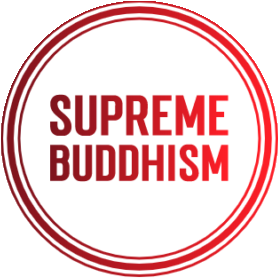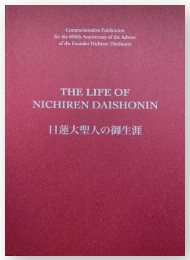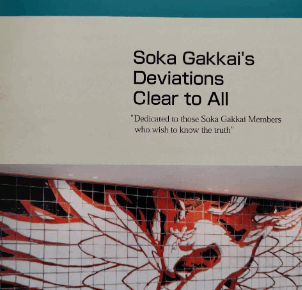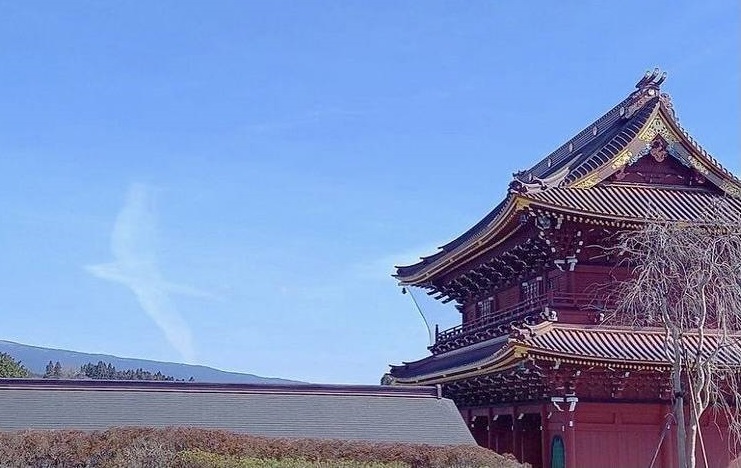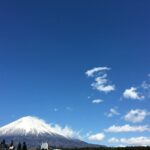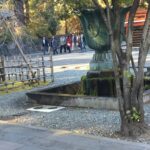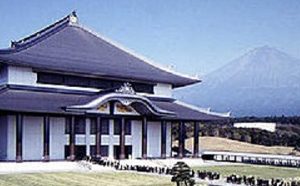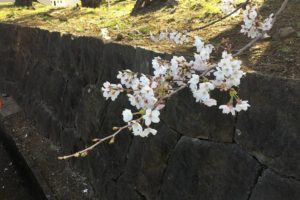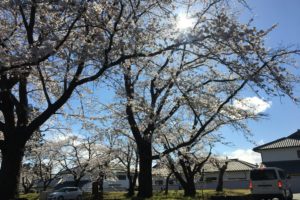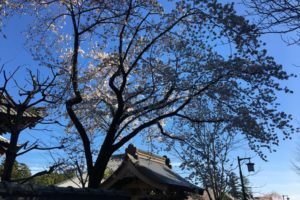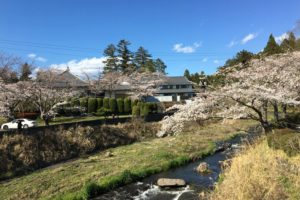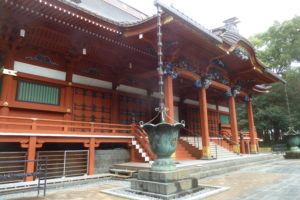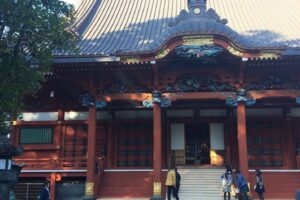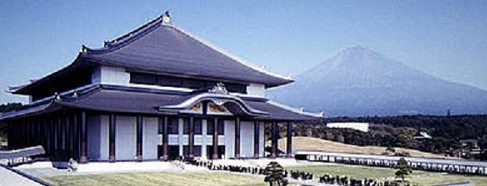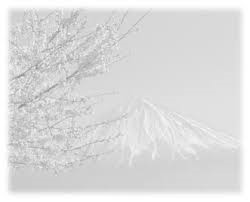The Gosho, “The Selection of the Time” (Senji sho), was written on the 10th day of the 6th month of the 1st year of Kenji (1275), in Minobu, by Nichiren Daishonin, when he was 54 years of age.
The Daishonin began this Gosho by writing:
One who wishes to study the teachings of Buddhism must first learn to understand the time. (Gosho, p. 834; MW-3, p. 79)
This passage clearly indicates the essential significance of this writing: Those who study and practice True Buddhism must understand the time and select the Law and the practice that are appropriate for that time.
The following quote from “The Selection of the Time” cites a passage from the Great Collection Sutra (Daijuku kyo). This passage shows that time, in Buddhist doctrine, was divided into five-hundred-year periods following the passing of Shakyamuni. The special characteristics of each period are presented:
Shakyamuni Buddha, the World-Honored One, addresses Bodhisattva Gatsuzo and predicts the future. Thus he says that the first five hundred years after his passing will be the age of enlightenment, and the next five hundred years, the age of meditation (making one thousand years). The next five hundred years will be the age of reading, reciting, and listening, and the next five hundred years, the of building temples and age
stupas (making two thousand years). Concerning the next five hundred years after that, he says, “Quarrels and disputes will arise among the adherents to my teachings, and the Pure Law will become obscured and lost.” (MW-3, p. 85)
In Japan, during the lifetime of Nichiren Daishonin, the coming of the Latter Day of the Law was clearly manifested in society, just as Shakyamuni had predicted in the sutra:
Quarrels and disputes will arise among the adherents to my teachings, and the Pure Law will become obscured and lost.
The actual conditions in society substantiated these predictions. People experienced devastation in their lives. The social order deteriorated, and there were frequent occurrences of natural disasters, famine, and epidemics. The entire society manifested the destruction that was characteristic of the Latter Day of the Law.
Given these conditions, many people felt that, since the time had come when Shakyamuni’s teachings were no longer capable of saving humankind, as expounded in the Great Collection Sutra, they would be able to escape from the clutches of suffering only by relying on the compassion of a Buddha other than Shakyamuni. This reliance was found in the Jodo-Nembutsu teachings, which sought salvation by upholding Amida Buddha, the master of the Pure Land in the Western Paradise.
The Amida faith was practiced as the initial practice of the Tendai sect. Honen,
the founder of the Jodo sect in Japan, honed in on the anxiety and discomfort of the people who felt the advent of the Latter Day of the Law. He added his personal analysis and asserted that the people must single-mindedly chant the Nembutsu incantation of “Hail Amida” (Namu Amida Butsu). He taught that all people could be reborn after their death, in the Pure Land of the Western Paradise by upholding Amida Buddha and chanting the Nembutsu. This doctrine played upon the people’s fears caused by the occurrences they witnessed in the period of the decline of Shakyamuni’ s Law. As a result, the Nembutsu quickly , spread throughout society.
The most ridiculous aspect of Honen’ s arbitrary interpretation was his assertion that, while the Lotus Sutra was a superior teaching, it could not be comprehended by the people of the Latter Day of the Law because it was a difficult teaching. He claimed that the people’s capacity to understand it was diminished. Honen the reasoned that the people, therefore, woul be unable to attain enlightenment, even they practiced the Lotus Sutra, and the would be incapable of resolving the actua suffering in their lives.
In the Rissho ankoku ron, (“On Securing the Peace of the Land throug the Propagation of True Buddhism” Nichiren Daishonin taught that slanderin True Buddhism through such arbitrar interpretations that ignored the teachings the Buddha, in fact, demonstrated the ver phenomenon of the diminished power Shakyamuni’s Buddhism in the Latter Day the Law. It was the root cause of all aspect of social instability, calamities, famines, an epidemics. In the Gosho, “The Selection the Time” (Senji sho), the Daishonin taugh that propagating Buddhism based on th capacity of the people, as taught by the Jod sect, was an erroneous doctrine. The Pur Land teachings of the Jodo sect dominated and influenced society at the time. The Daishonin explained that those who study and embrace Buddhism must select the doctrine and practice according to the time.
In “The Selection of the Time” (Senji sho), the Daishonin wrote the following about the issue of the doctrine and the capacity of the people:
At times, the Buddha’s teaching will be met with slander and one therefore refrains from expounding it for the present, and at other times, even though one encounters slander, one nevertheless makes a point of preaching anyway. There are times when, although a few persons may have the capacity to believe, the great majority will only slander the Buddha’ s teaching, and one therefore refrains from expounding it for the present. And there are other times when, although the great majority of persons are bound to slander the Buddha’ s teaching, one nevertheless makes a point of preaching anyway. (Gosho, p. 835; MW-3, p. 83)
Thus, the Daishonin points out that, when the Buddha expounds the Law, if the capacity of the people is undeveloped, there are two ways to approach the situation.
One measure would be to refrain from expounding the supreme Law. The rationale is that if people were unable to comprehend the supreme Law, and then slander it because of their neglect or ignorance, they would, amass karmic sins due to the slander. Thus, the supreme Law is not expounded to prevent the possibility of slander. Another measure would be to definitively preach the Law, regardless of the capacity of the people, even if they may, in fact , slander the Law.
The Sutra of Infinite Meaning (Muryogi kyo), the opening text of the Lotus Sutra, states the following:
This signifies the truth that has heretofore been unrevealed for more than forty years.
This shows that the Lotus Sutra, which was about to be expounded, was the essential purpose of Shakyamuni’s advent. Furthermore, the Hoben (Expedient Means; second) chapter of the Lotus Sutra has the following passage:
The World-Honored One has long expounded his doctrines and now must reveal the truth.
and also this excerpt:
Honestly discarding expedient means, I will preach only the unsurpassed Way.
The pre-Lotus Sutra teachings were expedients, while the Lotus Sutra was the true purpose of Shakyamuni’s advent into this world. The Lotus Sutra is the most supreme teaching in all of Buddhism. It is the one and only Law for the attainment of enlightenment, and this fact was confirmed by none other than Shakyamuni, the very person who preached it. However, even within the Lotus Sutra, there are two totally divergent notions. One promotes the idea that the teaching should not be presented to those who may slander it, and the other enthusiastically asserts that it should be expounded even to those who may slander it. Encountering this dilemma, Nichiren Daishonin referred to the explications of T’ ien-t’ai and Chang-an and established “time” as the standard for judgment.
He explained the reason for this in his Gosho, “How Those Initially Aspiring to the Way Can Attain Buddhahood Through the Lotus Sutra” (Hokke shoshin jobutsu sho):
Therefore one should by all means
persist in preaching the Lotus Sutra and causing them to hear it. Those who put their faith in it will surely attain Buddhahood, while those who slander it will establish a “poison drum relationship” with it and will likewise attain Buddhahood. In any event, the seed of Buddhahood exists nowhere apart from the Lotus Sutra. (Gosho, p. 1315; MW-6, p. 197)
Thus, the Daishonin declares that there is no means other than the Lotus Sutra to promote the enlightenment of all humanity in the Latter Day of the Law. Therefore, it is essential to persistently expound the Lotus Sutra, regardless of the capacity of the people. Even if there are people who slander the Lotus Sutra and initially accumulate negative karma from such slander, they will plant the seeds of Buddhahood in their hearts simply by forming a karmic bond with the Lotus Sutra. A temporary negative bond will be formed as a result of their slander. However, such action will conversely cause a karmic bond that will lead them to enlightenment in the future.
The principle of cause and effect is fundamental in Buddhism. It is presented through the doctrine of the Three Phases of sowing, maturing, and harvesting (shu juku datsu). Sowing represents the Buddha’ s act of planting the seed that will become the Buddha. Maturing signifies the gradual development of the seed planted in the past and the process in which the inherent capacities are manifested. Harvesting refers to completing the development of the seed of Buddhism and the attainment of Buddhahood.
The Buddhism of Shakyamuni is characterized by the doctrines of the maturing and the harvest. Its objective was to manifest the capacity of the people who had already received the seed of Buddhism in the past and to lead them to enlightenment. In contrast, Nichiren Daishonin’s Buddhism is the doctrine of the sowing. Its objective is to sow the seed of Buddhism in the hearts of the people who have never received the seed that enables them to attain Buddhahood. This seed of Buddhism is also characterized by the properties of cause and effect. By embracing and practicing to the Gohonzon of the Three Great Secret Laws, which represents the seed of Buddhism, people will simultaneously bring forth the inherent benefits of Buddhahood.
Without the sowing of the seed, which is the cause, there can be no attainment of Buddhahood, which is the effect. The Daishonin repeatedly states in the Gosho that the capacity of the people in the Latter Day of the Law is inferior and that these people do not possess the seed of Buddhahood.
In the Gosho, “How Those Initially Aspiring to the Way Can Attain Buddhahood Through the Lotus Sutra,” the Daishonin teaches:
Without considering whether or not it confirms to the capacity of ignorant persons, one should go ahead and teach them the five characters that compose the title of the Lotus Sutra and enable them to embrace it. (Gosho, p. 1315; MW-6, p. 195)
Rather than teaching according to the capacity of the people, we must prioritize sowing the seed of Buddhism, out of consideration for the causal factors of enlightenment and joy for the people.
Even if people react by slandering True Buddhism, we must do shakubuku by emphasizing the Lotus Sutra and expounding the benefits of the Gohonzon. This is the most appropriate practice in the Latter Day of the Law. When doing shakubuku in our daily lives, we must never fear upsetting others and never hesitate to propagate the Lotus Sutra.
The Fortitude (Kanji ; thirteenth) chapter of the Lotus Sutra states that the people who propagate the Lotus Sutra in the Latter Day of the Law, the Bodhisattvas of the Earth, will encounter the three powerful enemies and will experience various persecutions. The three powerful enemies will compete with one another to obstruct those who propagate the Lotus Sutra. This is exactly what the Buddha expounded. In many Gosho passages, we see that Nichiren Daishonin encountered all three of these powerful enemies described in the Fortitude (Kanji) chapter. He described these experiences as proof that he was, indeed, the votary of the Lotus Sutra and the reincarnation of Bodhisattva Jogyo, the leader of the Bodhisattvas of the Earth. The correct doctrine of the Lotus Sutra in the Latter Day of the Law, based on the teaching hidden in the depths, defines the reincarnation of Jogyo as the Buddha who emerged to save all humankind. The essential entity of this Buddha is the True Buddha from the eternal past of kuon-ganjo.
Nichiren Daishonin established the Dai-Gohonzon, the entity of the Three Great Secret Laws, for the sake of the enlightenment of all humanity in the Latter Day of the Law. Therefore, the act of propagating the Lotus Sutra in the Latter Day of the Law is the ultimate propagation of Nichiren Daishonin’s Three Great Secret Laws to achieve kosen-rufu. This is the true significance of the selection of the time.
We, the priests and lay believers of Nichiren Shoshu throughout the world, are exerting our utmost efforts in shakubuku in order to refute heresy and reveal the truth. Let’s follow the instructions of High Priest, Nikken Shonin and advance towards our goal of the 750th Year of Refuting Heresy and Revealing the Truth, based on the Rissho ankoku ron. Let us uphold the conviction that this is, indeed, the practice that is appropriate for the time and ever more vigorously practice for ourselves and for others.
